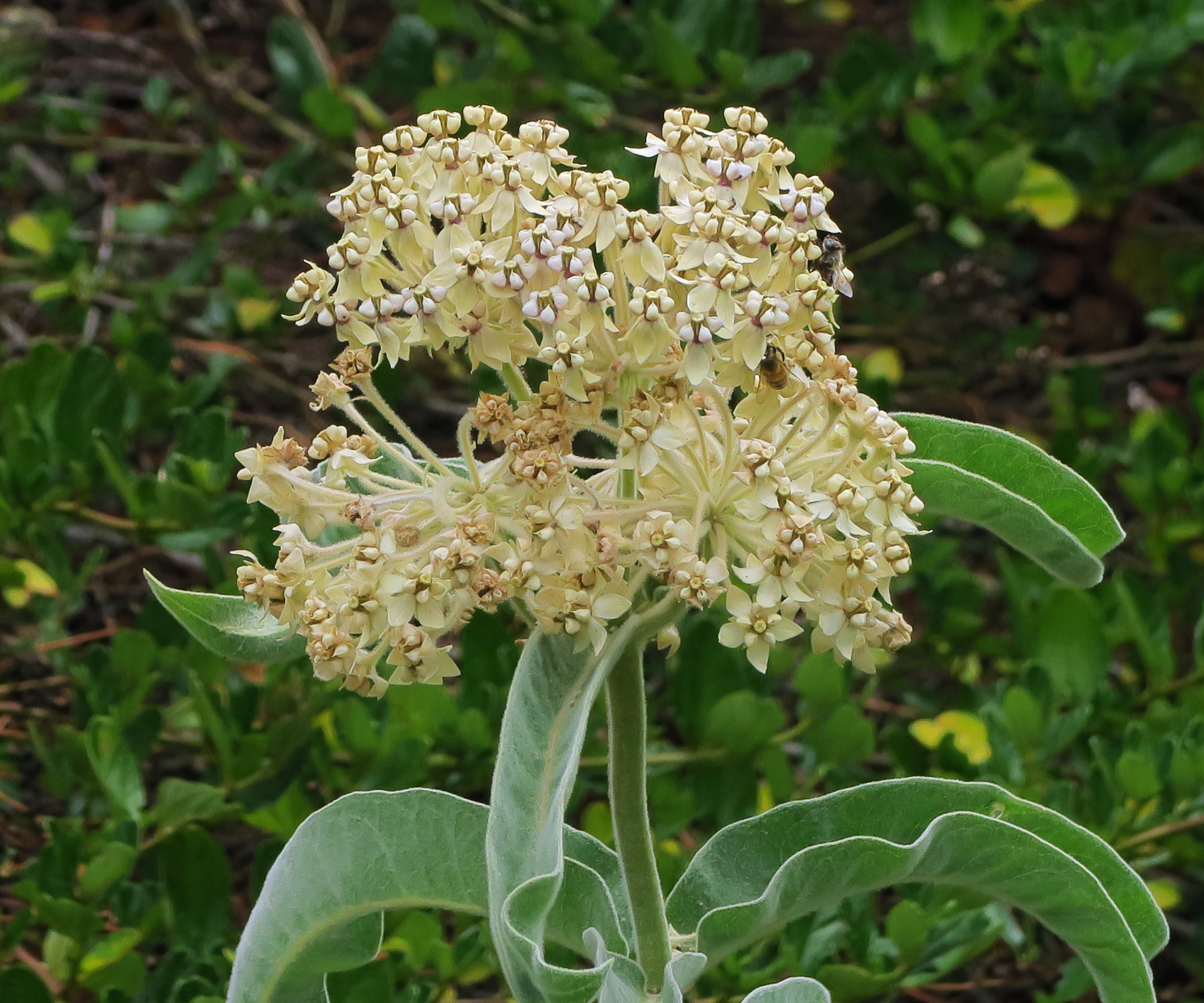
Latin Name: Asclepias eriocarpa
Common Name(s): Kotolo Milkweed
Family: Apocynaceae
Size: up to 4 feet tall. Can establish large colonies by spreading rhizomes.
Life Cycle: Perennial
Distribution: California, Baja California, and Nevada in a variety of habitats, particularly in arid areas on hillsides and in the woods.
Light Requirements: Full sun.
USDA Zone: 4 to 9b
Drought Tolerance: Very high once established.
Fire Risk: Presumably low while it is growing, given the fleshy leaves. If growing near a structure in a fire-prone area it is probably best to cut it down after it dies back and dries to avoid the seed fluff and dried plant matter fueling any fires.
Cultivation Notes
Once established, milkweeds tend to be tough and adapt well to the garden. Kotolo milkweed needs full sun and excellent drainage, as it does not appreciate wet soil for long periods of time. It grows very well in hot, rocky, and sandy places and is suitable for desert gardens. Do not disturb the roots if you can help it. Once established the plants will do fine without summer irrigation, but make sure they receive regular water when young. Fertilization not needed, the plants do fine even in poor and gravelly soil. Slug control may be needed in wetter regions when the plants are young, as heavy feeding by non-native slugs can kill young plants. Simply remove slugs in the evening and kill in soapy water.

Ecology
The interesting flowers bloom from spring to summer and are very attractive to pollinators. Many specialist insects feed on this plant, and this is a preferred host plant of the monarch butterfly. The seeds are consumed by birds in the winter, when few food sources are available.
Uses
Milkweeds are all toxic to some degree, containing cardiac glycosides. Kotolo milkweed is one of the most toxic so it is not a good idea to eat it. As with other milkweeds, the seed fluff can be used as a down replacement or pillow stuffing and the fiber can be used to make cordage.
Propagation
Seed or by division (more difficult). Seeds are easily collected and can be sown directly in the fall or in spring. Sow just under the soil surface. Germination can be slow and often is irregular. If planting in the late spring, cold stratification will likely be needed for up to two months before germination will take place. I have found milkweeds in general to be finicky when first establishing them. Young seedlings need irrigation, at least for the first year or two. The seedlings are temperamental, so it is best to transplant carefully without disturbing the roots too much. Division is difficult as well, as milkweed resents disturbance, and division is best done in winter when the plant is dormant.